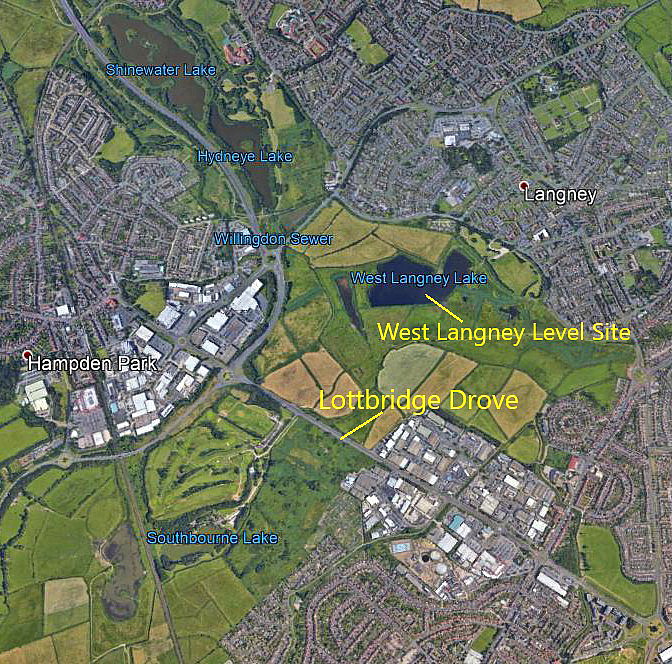West Langney Level
WEST LANGNEY LEVEL: Temporary Landing Ground
This was the 57th venue during Sir Alan Cobham's 1929 Municipal Aerodrome Campaign, which he visited on the 17th August 1929. He had planned to visit 107 venues, but, due to a couple of crashes and other setbacks, he still managed to visit 96, which of course was still a magnificent achievement. In essence the campaign had two primary objectives, the first to encourage towns and cities to establish aerodromes - most of which could be serving as municipal airports.
The second was to encourage school children to become 'air minded', and indeed the aircraft he mostly used, the de Havilland DH61 'Giant Moth' (G-AAEV) was named 'Youth of Britain'. In those days the cost of taking school children for a flight was described as being met by an "anonymous donor". Today we know this donor was Lord Wakefield of Castrol Oil fame. (He also met much of the costs for Amy Johnson for her epic flight to Australia in 1930). The DH61 could carry ten passengers and typically at least four flights were arranged, with a teacher on board.
Without much doubt these flights inspired many youngsters to get involved in aviation.
What seems of interest is just why Cobham decided to use WEST LANGNEY LEVEL rather than more established aerodromes in the area? One answer seems to be that, whenever possible, Cobham wanted to have total control of the event. A principal he persevered with when arranging venues for his later 'Air Circus' events from 1932 to 1935. Cobham hated the term 'Air Circus' so it is ironic that today that he is usually remembered as being the master of the 'Flying Air Circus' era.
A MICHAEL T HOLDER GALLERY
Note: The newspaper article was published in the Eastbourne Chronicle on the 10th August 1929.
Note: This fifth item, a newspaper advert, was also published in the Eastbourne Chronicle, but this time on the 14th August 1929.
Location: About 2nm N of Eastbourne town centre
Period of operation: 17th August 1929
NOTES: If anybody can kindly offer more advice and information, this will be most welcome.
We'd love to hear from you, so please scroll down to leave a comment!
Leave a comment ...
Copyright (c) UK Airfield Guide





















